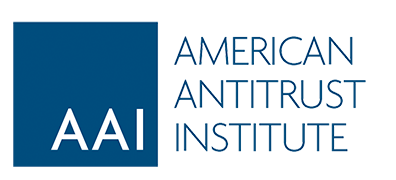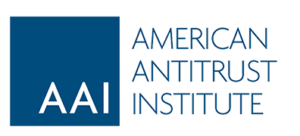For almost three decades, light-handed enforcement of the U.S. antitrust laws tilted the scales toward allowing consolidation and strategic conduct that was thought to enhance “efficiency.” Justifications for this approach ranged from forcing down costs, to promoting quality control and spurring investment in R&D by large deep-pocketed firms. Over-enforcement was the bogeyman of conservative ideology. Too-vigorous application of the laws threatened to stifle the efficiencies that were expected to flow from mergers and restraints on competition.
This approach is now known to have been misguided. While over-enforcement was assiduously avoided, the sin of under-enforcement was committed on a grand scale. Mounting evidence points to declining competition, increasing market concentration, growing income and wealth inequality, and slowing rates of market entry by start ups. As this story unfolds, the progressive agenda has ascended and conservative economic and business scholars have gone silent, or even signaled interest in being part of the debate over policy responses to declining competition.
The 30-year battle waged on competition by conservative ideology has produced many casualties. One of them is labor. At the most general level, market power is exercised by cutting back on output, which reduces demand for workers. An obsessive focus on squeezing out cost efficiencies through consolidation means streamlining the workforce and laying off workers. Large firms now wield significant market power in buying labor, reducing the bargaining power of workers – even those in collective bargaining units. “Non-compete” agreements among firms in hiring skilled professionals also harms labor. All of this, and more, has worked to widen the inequality gap between labor and capital.
Of course, lax antitrust enforcement is hardly the sole cause of America’s labor and inequality problems. Advances in manufacturing and information technology, further shifts from a manufacturing to a service economy, expanding globalization of trade, and rising levels of education and income in other countries contribute as well. Moreover, there are a host of other statutory and regulatory constraints that affect labor through restrictions on worker mobility and occupational licensing requirements.
It comes as no surprise that inequality is now an economic and political issue. A disenfranchised and disgruntled part of the American labor force embraced Mr. Trump’s brand of conservative populism during the presidential campaign. This group suffers from wage depression, loss of employment benefits, offshoring of jobs to countries with cheaper wage rates, and weakened collective bargaining power. Promises of “America first” and economic nationalism resonated deeply with this group, who continue to wait for Mr. Trump to deliver on his promises to revitalize the U.S. labor force.
Antitrust is an important policy tool for addressing labor and inequality problems. And enforcers have begun to respond. Antitrust investigations have focused on the effects of mergers and abusive conduct on labor markets. For example, the U.S. Department of Justice (DOJ) challenged the recent merger of Tyson Foods and Hillshire Brands, which would have created a powerful purchaser of sows. The DOJ’s condition on the deal was designed to reduce the merged firm’s enhanced ability to push down prices paid to farmers. But for the remedy, the likely abuse of buyer power could have driven farmers from the market.
The government and plaintiffs in civil suits also prevailed in a case involving illegal agreements by hi-tech firms not to recruit each other’s employees. In the merger of health insurers Anthem and Cigna, the DOJ’s case revolved around how the larger insurer could drive down reimbursement rates paid to hospitals and physician practices, making it more difficult to attract labor to the medical professions and early retirement of physicians.
Antitrust has the tools to address labor and inequality problems. But it can and should do more. Enforcers should challenge deals that create powerful buyers that can depress wage rates and force down prices paid to suppliers. Public and private enforcers can pursue alleged bid rigging in auction markets, such as those for cattle, which drives down prices paid for cattle. They can scrutinize conduct that raises entry barriers for smaller innovators in markets like medical devices and online retailing. Enforcers can also block mergers that eliminate important head-to head competition between R&D pipelines that employ scientists and researchers. Finally, enforcers can look even more skeptically at claims that mergers will lower costs (by among other things, reducing employment). By protecting the competitive process, enforcement also promotes market conditions that are conducive to retaining and attracting labor.
How much of the burden for solving the labor and inequality problem should antitrust shoulder? Some propose wholesale changes to the standard underlying the laws in order to make antitrust go further and faster. They would swap out the existing “consumer welfare” standard for a new “public interest” one. A public interest standard would expand the scope of antitrust to directly consider the effects of anticompetitive activities on employment. Scrapping the existing standard in the name of combatting inequality would be shortsighted, for a couple of reasons.
First, a consumer welfare standard already accounts for the distribution of wealth between consumers and firms – a big part of the inequality problem. Antitrust’s focus on price, quality, choice and innovation means that the laws are mindful of taking away from consumers and giving to firms. While consumer welfare was once interpreted as focusing on efficiency (which cares much less about equity), that is no longer the case. The vigorous, consumer-minded enforcement that was the hallmark of the late Obama administration broadly benefitted the public and workers. We need more of that.
Second, proposals to overhaul antitrust raise nontrivial details. How do we define the “public interest?” That standard could include everything that is affected by a merger or abusive conduct: employment, health and safety, and even environmental concerns. A new standard would require significant guidance by the enforcement agencies. It would also take years to develop the case law necessary to establish a reliable precedent for judicial review. Moreover, it raises questions about how an antitrust public interest standard would apply in industries such as telecommunications and energy where regulatory agencies also apply a public interest standard. The uncertainty that a revision in antitrust standard would create could lead to the under-enforcement of antitrust laws that helped create the current crisis of declining competition.
Changing the antitrust standard would therefore be a poor policy choice. There are other policy tools that can and should be harnessed – in concert with antitrust – to tackle labor and inequality problems. This includes tax policy, job retraining programs, economic incentives for small business, and subsidies for higher education. Moreover, statutory changes to the antitrust laws are unlikely under a Trump administration.
So, why all the fuss? These proposals are taking important time away from improving the existing antitrust enterprise and more effectively protecting labor markets. By maintaining competitive markets, antitrust law broadly benefits workers and the public. And enforcement resources can be focused in ways that will particularly help serve the goal of reducing inequality. What we need is creative and proactive enforcement, not to throw the baby out with the bathwater. The Administration’s nominee for chief of the DOJ’s Antitrust Division is a smart, experienced, and thoughtful antitruster – we hope he takes up where the most recent enforcers left off.


